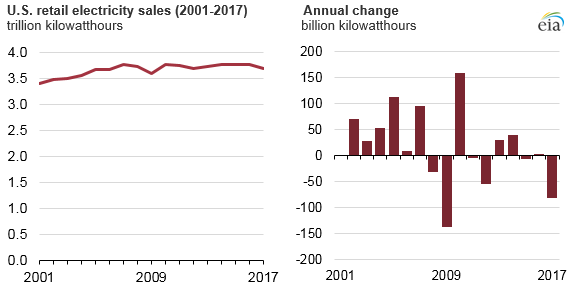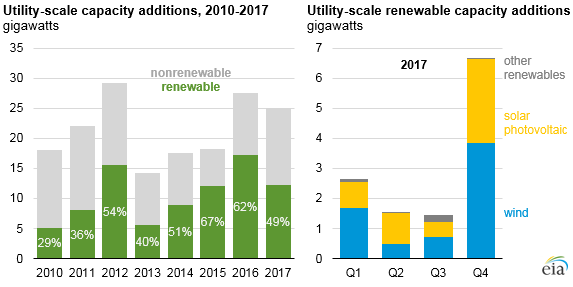Electricity Sales Fall the Most Since the Great Recession
Electricity Sales in the United States experienced the greatest year-over-year decrease since since the Great Recession, according to the U.S. Energy Information Administration (EIA).
In total, electricity sales were 2 percent lower in 2017 compared to 2016 (see below). The 2 percent drop reflects lower retail sales in the residential, commercial, and industrial sectors and is largely attributable to milder weather.

As you can see, electricity sales in 2017 were essentially the same as in 2006, despite the fact that the U.S. population has grown by about 9 percent since then, growing from 298.5 million people in 2006, to 325.7 million in 2017 (see below).
We have a growing population but electricity sales are essentially flat, demonstrating that Americans have reduced their per-capita electricity demand. Despite flat electricity sales in the face of growing population, the United States has continued to build more electricity generation capacity (see below).
According to EIA, 25 gigawatts (GW) of new utility-scale electric generating capacity were added to the power grid during 2017, nearly half of which were renewable technologies, especially wind and solar.
Increasing the number of facilities generating electricity when electricity sales are flat leads to increasing electricity prices because in much of the country, utility companies are guaranteed a profit on every dollar they spend on infrastructure, such as wind turbines, solar panels, and transmission lines.
As utility companies build more and more generation capacity, regardless of the generation technology, the cost is added to the prices people pay for electricity. This is why electricity prices keep increasing even though natural gas prices are about four times lower today than they were in 2008.
When you’re in a hole, stop digging. When you have enough power plants, stop building.
Enjoy this lovely snowy April weather!